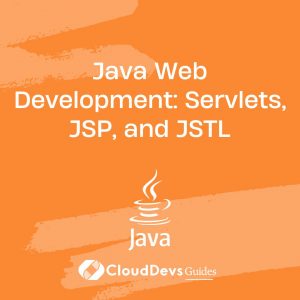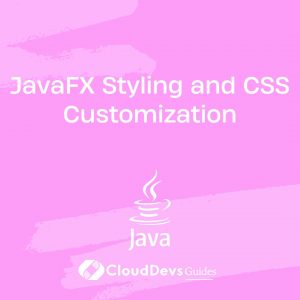Introduction to Spring Framework: Java Enterprise Development
In the realm of Java enterprise development, the Spring Framework stands as a prominent and versatile toolset that has revolutionized the way applications are built. With its robust architecture and comprehensive set of features, Spring simplifies and enhances the process of creating complex, enterprise-grade applications. This blog post serves as an introductory guide to the Spring Framework, covering its core concepts, benefits, architecture, and essential components.
Table of Contents
1. Understanding the Spring Framework
1.1. What is the Spring Framework?
The Spring Framework, developed by Rod Johnson in 2003, is an open-source Java platform that addresses the challenges of enterprise application development. It offers a comprehensive programming and configuration model for building modern, scalable, and robust applications. Spring’s modular structure allows developers to choose the components that best suit their project’s requirements.
1.2. Benefits of Using Spring
Using the Spring Framework provides numerous advantages for Java enterprise development:
- Simplified Development: Spring simplifies the development process by providing abstractions over complex technologies and reducing boilerplate code.
- Loose Coupling: Spring’s Inversion of Control (IoC) container promotes loose coupling between components, enhancing maintainability and testability.
- Aspect-Oriented Programming: Spring supports Aspect-Oriented Programming, allowing developers to separate cross-cutting concerns, such as logging and security, from the core application logic.
- Modular Architecture: Spring’s modular design allows developers to pick and choose the components they need, promoting a highly modular and maintainable architecture.
- Integration with Other Frameworks: Spring seamlessly integrates with other popular frameworks and technologies, such as Hibernate for ORM and JavaEE for enterprise features.
- Enhanced Testing: With dependency injection and mock objects, testing becomes more efficient, enabling unit testing and integration testing.
1.3. Key Features
The Spring Framework comprises several key features that contribute to its popularity:
- Inversion of Control (IoC): This fundamental concept of Spring shifts the responsibility of object creation and dependency injection from the application code to the Spring container. It reduces tight coupling between components and allows for easier configuration and testing.
- Aspect-Oriented Programming (AOP): AOP in Spring enables the separation of concerns by allowing developers to define aspects that cut across multiple objects. This promotes modularity and reusability.
- Spring MVC: Spring’s Model-View-Controller (MVC) framework simplifies the development of web applications by providing a structured approach to handle requests, manage views, and control the application flow.
2. Architecture of the Spring Framework
2.1. Core Concepts
The Spring Framework’s architecture is based on a few core concepts that form its foundation:
- Beans: In Spring, a bean is a managed object within the Spring IoC container. These beans are created, configured, and managed by the container, allowing for easy dependency injection and lifecycle management.
- Container: The Spring container is responsible for managing the lifecycle of beans, handling their creation, configuration, and destruction. It also manages bean dependencies through dependency injection.
- Dependency Injection (DI): DI is a core principle of Spring, where objects are provided their dependencies rather than creating them themselves. This promotes loose coupling and easier testing.
2.2. Inversion of Control (IoC)
IoC is a design principle where the control over object creation and management is inverted from the application code to an external container. In Spring, the IoC container takes charge of creating beans, injecting their dependencies, and managing their lifecycle. This results in decoupling components and making the application more maintainable and flexible.
2.3. Aspect-Oriented Programming (AOP)
AOP is a paradigm that focuses on modularizing cross-cutting concerns, such as logging, security, and transaction management. Spring’s AOP module allows developers to define aspects that encapsulate these concerns and then apply them to various parts of the application. This separation enhances code modularity and reusability.
3. Key Components of the Spring Framework
The Spring Framework comprises several essential components that collectively offer a comprehensive solution for enterprise application development.
3.1. Spring Core Container
The Spring Core Container consists of the following modules:
- BeanFactory: The BeanFactory module provides the basic functionality of the IoC container. It is responsible for creating and managing beans as well as handling their dependencies.
- ApplicationContext: Building upon the BeanFactory, ApplicationContext adds additional features such as easier integration with Spring’s AOP features, support for internationalization, event propagation, and more.
3.2. Spring AOP
The Spring AOP module enables developers to implement Aspect-Oriented Programming. It includes features like:
- Aspect: An aspect encapsulates a cross-cutting concern. It defines what to do and when to do it.
- Join Point: A point during the execution of the application where an aspect can be applied. For example, method invocation or exception handling.
- Advice: The action taken by an aspect at a particular join point. Types of advice include “before,” “after,” “around,” etc.
3.3. Spring Data Access/Integration
This module simplifies data access and integration with various data sources. It includes support for JDBC, ORM frameworks like Hibernate and JPA, and transaction management.
3.4. Spring MVC
The Spring MVC framework is designed for building web applications. It follows the Model-View-Controller architectural pattern and provides features for handling requests, managing views, and controlling application flow.
3.5. Spring Security
Spring Security offers comprehensive security features for applications. It supports authentication, authorization, and protection against common security vulnerabilities.
4. Getting Started with Spring: Code Samples
4.1. Setting Up a Spring Project
To get started with Spring, you’ll need to set up a project with the required dependencies. Here’s a simple example using Maven:
xml
<!-- pom.xml -->
<dependencies>
<!-- Spring Core Container -->
<dependency>
<groupId>org.springframework</groupId>
<artifactId>spring-core</artifactId>
<version>5.3.9</version>
</dependency>
<!-- Other dependencies -->
</dependencies>
4.2. Creating Beans and Using IoC Container
Define a simple bean in a configuration file:
java
@Configuration
public class AppConfig {
@Bean
public HelloWorldService helloWorldService() {
return new HelloWorldService();
}
}
public class HelloWorldService {
public String sayHello() {
return "Hello, world!";
}
}
public class Main {
public static void main(String[] args) {
ApplicationContext context = new AnnotationConfigApplicationContext(AppConfig.class);
HelloWorldService helloService = context.getBean(HelloWorldService.class);
System.out.println(helloService.sayHello());
}
}
4.3. Applying Aspect-Oriented Programming
Define an aspect for logging:
java
@Aspect
public class LoggingAspect {
@Before("execution(* com.example.app.*.*(..))")
public void beforeMethodExecution(JoinPoint joinPoint) {
System.out.println("Executing: " + joinPoint.getSignature());
}
}
4.4. Implementing a Simple Spring MVC Application
Create a basic Spring MVC application:
java
@Controller
public class HomeController {
@RequestMapping("/")
public String home() {
return "index";
}
}
In the above example, the “index” refers to a view template (JSP/Thymeleaf/FreeMarker) that will be rendered.
Conclusion
The Spring Framework has played a pivotal role in shaping the landscape of Java enterprise development. Its rich set of features, including Inversion of Control, Aspect-Oriented Programming, and comprehensive component modules, empowers developers to build robust, maintainable, and scalable applications. This introduction merely scratches the surface of what Spring has to offer. As you dive deeper into the framework, you’ll uncover more advanced topics and capabilities that make Spring a staple in modern enterprise application development. So, whether you’re starting a new project or enhancing an existing one, consider embracing the Spring Framework to streamline your development process and elevate the quality of your applications.
Table of Contents









